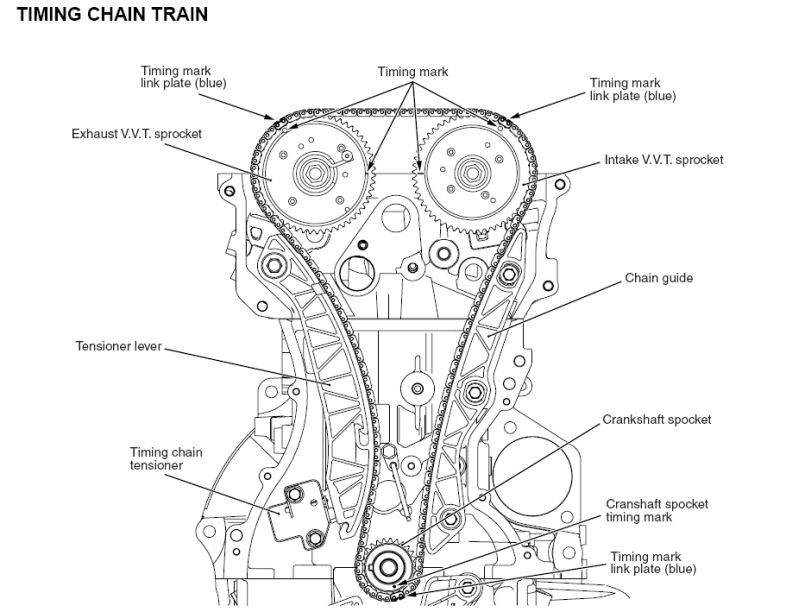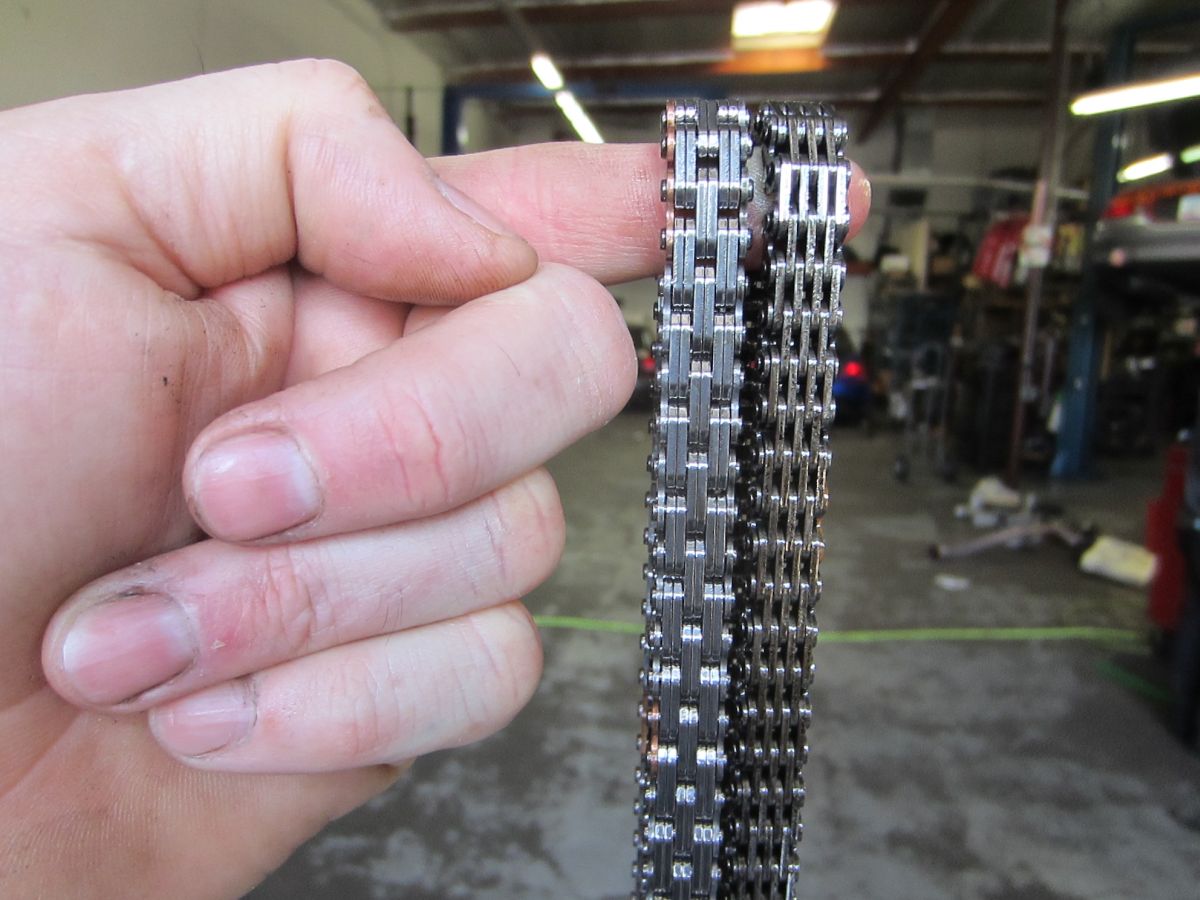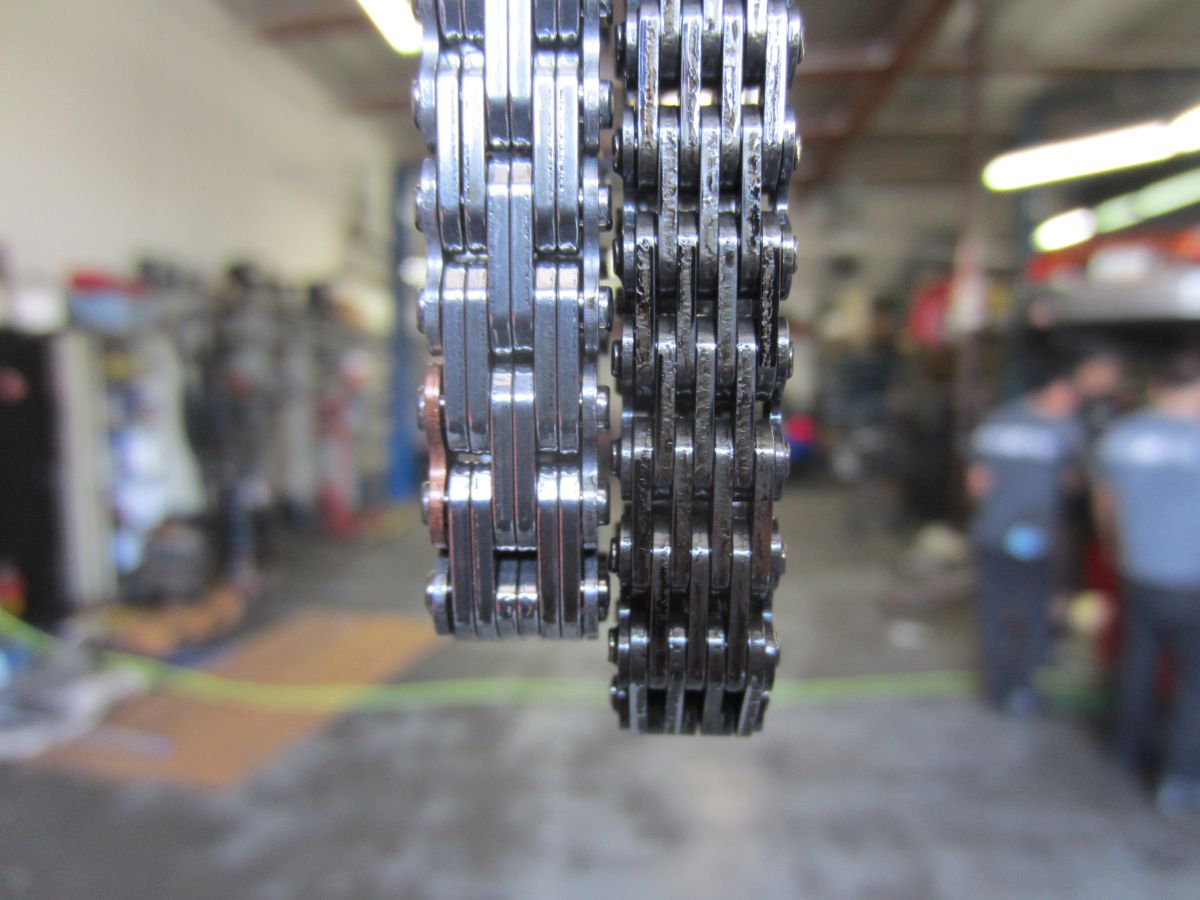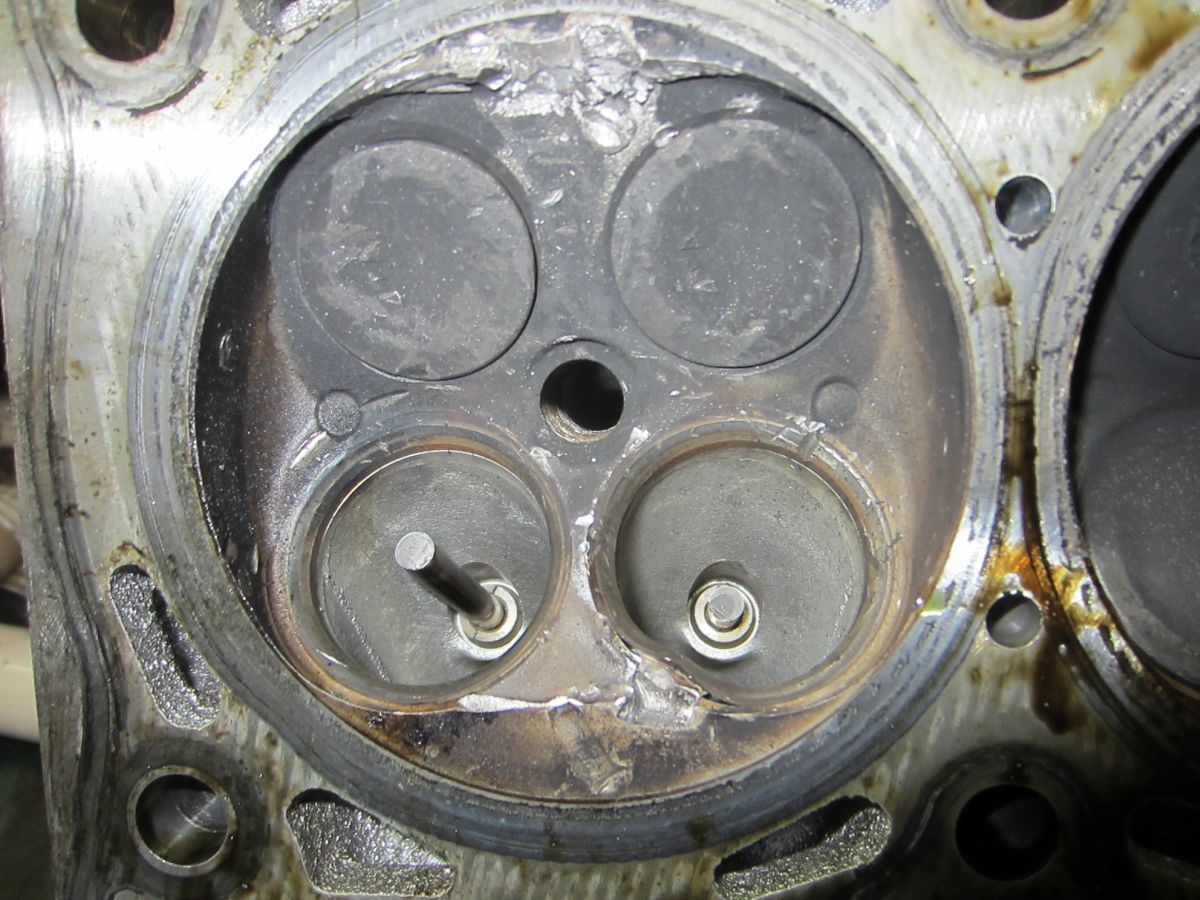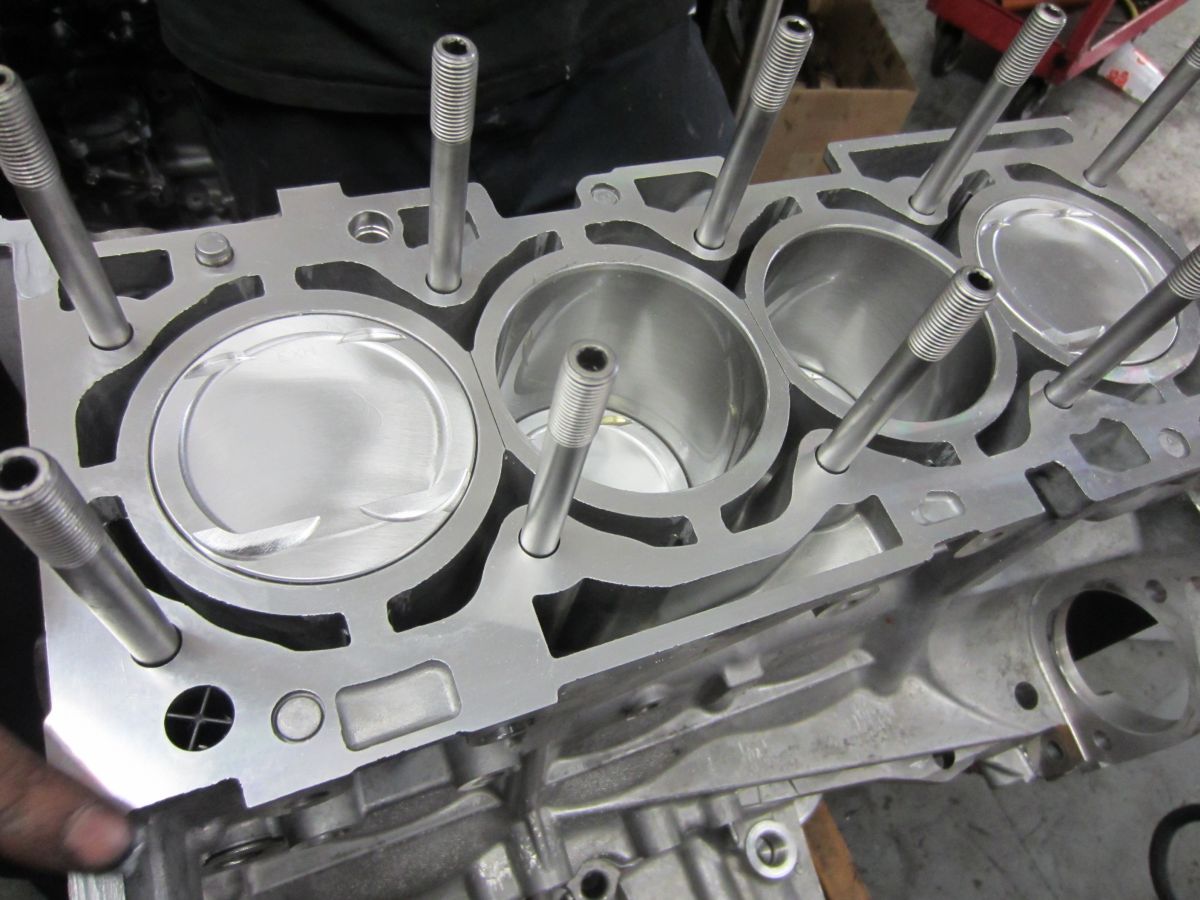4B11 Timing Chain – Good, Bad and Ugly. (mostly ugly, not so much good)
The 4B11 motor that comes in the 2008+ EVO X and 2009+ Lancer RalliArt does not have a timing belt. It has a timing chain that turns the cams. The computer keeps track of how much the chain stretches over time. It will tell you when it is time when all the systems are working properly. If you get the triangle warning light and the car has a rough idle, it might have jumped a tooth or two. A couple more teeth jumping means that valves and pistons start crashing together. If your chain has been confirmed to be stretched and you have a rough idle, don’t drive the car at all.
A recent customer never did a full service and rarely changed his oil in 80k miles. The timing chain stretched enough to jump quite a bit. It bent the intake valves, when the piston came up it smashed the valve stems into the guides to where they broke off. One of the valves got bent into a perfect little taco. It was able to get knocked back into the intake manifold for an out of the park home run. Here is a new redesigned timing chain (with less links to rub against each other) that still will stretch prematurely if you don’t change the oil enough:
How much stretch it takes to make everything crash:
Head damage:
Seriously… dude! Change your oil more often!
But dad got him this to make it all better:
There is no specified mileage interval to change the timing chain. Obviously if the motor was all apart for some other reason and you had more than 60k miles it would be a good idea to go ahead and do it.
If the timing chain stretches enough on the older 2008 design oil jet, the chain can damage said jet. It is a little pipe kind of hanging out there that a floppy chain could crash into. Later they realized that instead of hanging a delicate little pipe out there in all the moving parts, they could just drill a little hole in the right spot of an oil passageway and oil would hit the chain just the same.
It is a very involved job to change it all. The oil pan comes off, the whole side of the motor comes apart. There is not a lot of room to work in there. Lots of care needs to be exercised to get everything sealed back up properly so you dont have oil leaks.
Dirty oil seems to be the most damaging to the timing chain. Also it can lead to solenoids and valves not operating correctly to make the ECU think that something is wrong with the timing chain system and the proper alignment between the crankshaft and cams.
Dealer retail parts prices for the timing chain, guides and tensioner (as of 6/12):
Tensioner Lancer, Lancer Evolution 2.0L $63.88
Timing chain Lancer, Lancer Evolution 2.0L $96.18
Chain guide Lancer Evolution; Slack Side 2.0L $11.48
Chain guide Lancer Evolution; Tensioner Side 2.0L $21.10
Also the oil pump chain is down in there too:
Oil Pump chain Lancer Evolution 2.0L $120.52
Oil Pump Chain tensioner Lancer Evolution 2.0L $77.50
Chain Guide Lancer Evolution 2.0L $68.03
In a perfect world (the world where you are rich) you would also change all of the sprockets. This means replacing the entire MIVEC sprocket assembly!
Here is a wonderful Engrish description from the factory tech manual:
If the vehicle equipped with 4B11-T/C engine continues the rough driving like competitive running*1, the amount of carbon mixed into the engine oil tends to increase. This can possibly cause the timing chain to gradually elongate. To prevent this, the function or logic monitoring the amount of elongation of the timing chain is integrated into the ECM. When the ECM detects the elongation of the timing chain, the warning is shown on the multi-information display of combination meter as shown in the illustration. This gives the driver the information that the visual check of the elongation of the timing chain is necessary. If this warning is continuously neglected, the timing chain can possibly interfere with the other engine components, resulting in the engine damaged.
NOTE:
*1: The competitive running means the running that constantly repeats the cycle of the full opened position of the accelerator pedal and the full closed position of the accelerator pedal.
From the factory repair manual:
Timing Chain Warning Indicator
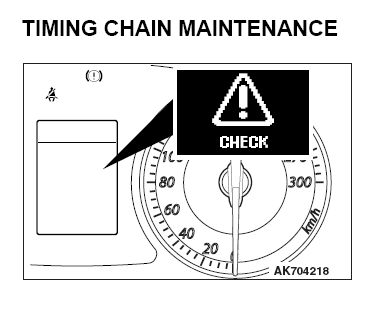
The ECM stores the timing chain conditions as the learning value when the timing chain is installed. The ECM stores the amount of elongation of the timing chain in the EEPROM as the current learning value, compared with the learning value. The ECM judges that the visual check of the elongation of the timing chain is necessary when the current learning value exceeds the specified value. Thus, use the scan tool MB991958 to always carry out the maintenance of the learning value related to the timing chain that is stored by the ECM after the following service.
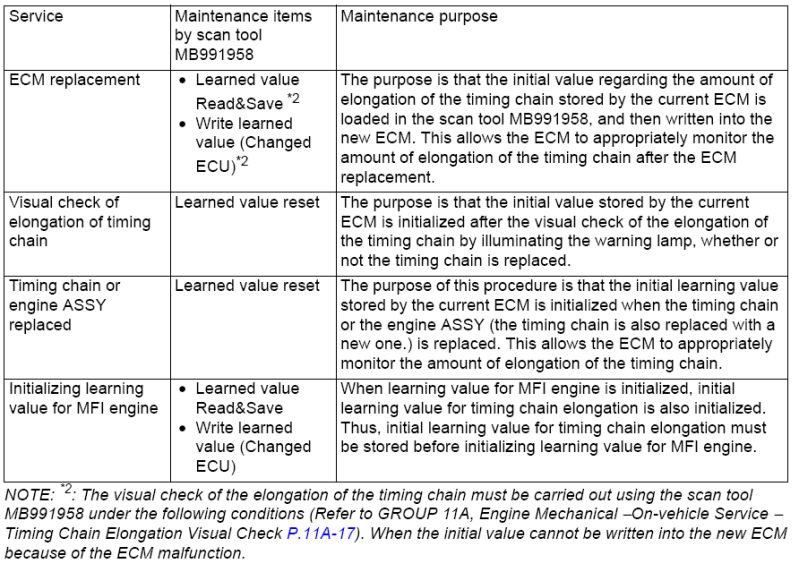
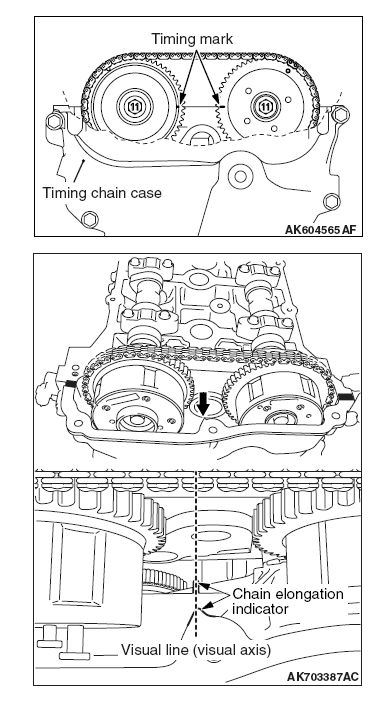
When the timing chain elongates more than the specified length, the diagnosis code No. P0012, variable valve timing (VVT) advanced-angle value abnormal, is output. Unless the diagnosis code No. P0012, therefore, is output, the visual check is unnecessary.
Unless the work using the following scan tool MB991958 is correctly carried out due to the malfunction of ECM, carry out the check whether or not the diagnosis code exists.
.
Storing the learning value regarding the amount of timing chain elongation before the ECM replacement•
Writing the learning value into the new ECM after the ECM replacement•
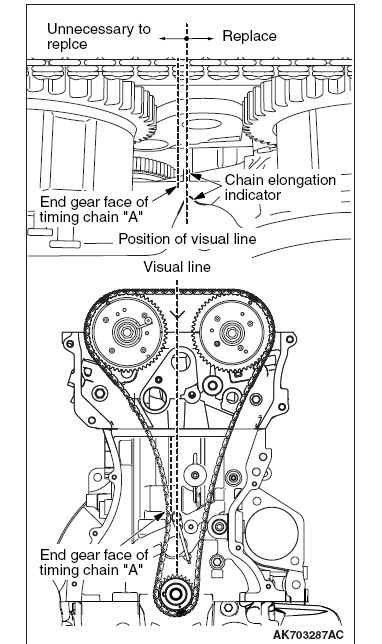
6.Check the end top point “A” of timing chain cross section surface and the point of chain elongation indicator which is fixed in Step 5. When the end top point “A” of timing chain is positioned at the left-hand side of chain elongation indicator, it is unnecessary to replace the timing chain because the timing chain is within the specified length. When the end top point “A” of timing chain is positioned at the right-hand side of chain elongation indicator, it is necessary to replace the timing chain because the timing chain elongates more than the specified length.
7.Install the upper chain guide. CAUTION
Completely clean the old FIPG remaining in the clearance between the mating parts.
Install the cylinder head cover within 3 minutes of applying the liquid gasket.•
8.Apply a 4 mm diameter bead of liquid gasket to the point shown in the illustration.
Liquid gasket: THREE BOND 1217G or equivalent product.
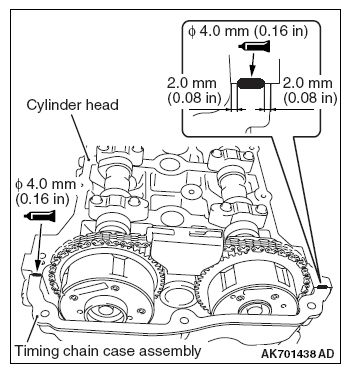
9.Installing the cylinder head cover, tighten the tightening bolt according to the following procedures.
a.Temporarily tighten the tightening bolt in the order shown in the illustration. Tightening torque: 3.0 ± 1.0 N⋅m
b. Tighten the tightening bolt to the specified torque in the order shown in the illustration.
Tightening torque: 5.5 ± 0.5 N⋅m
10.Install the ignition coil.
11.Use the scan tool MB991958 to select the timing chain maintenance. Initialize the learning value. Refer to GROUP00, General − Precautions before service − Timing chain maintenance P.00-33.
NOTE: Carry out the initialization even if the amount of timing chain elongation is normal. As a result of this, it is necessary to replace the timing chain before the timing chain interferes with the other components when the next warning lamp illuminates or the diagnosis code No. P0012 is output.
